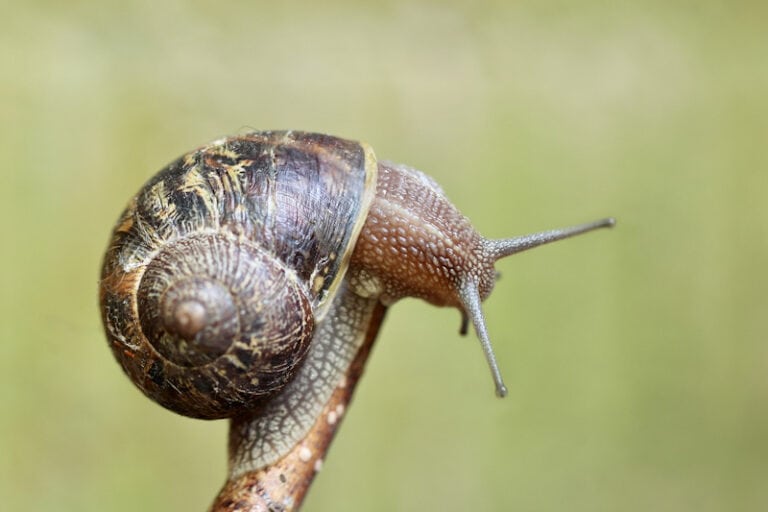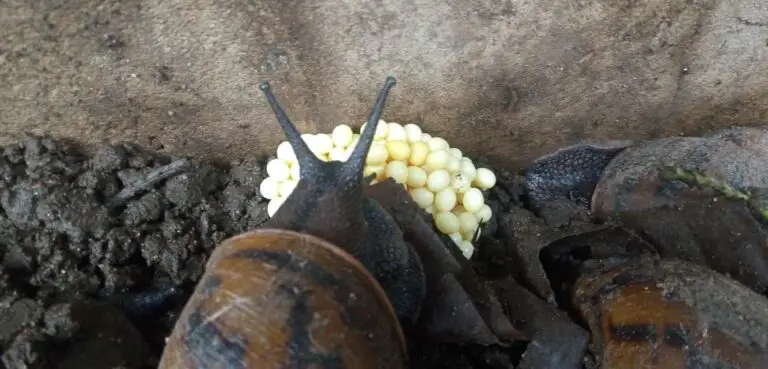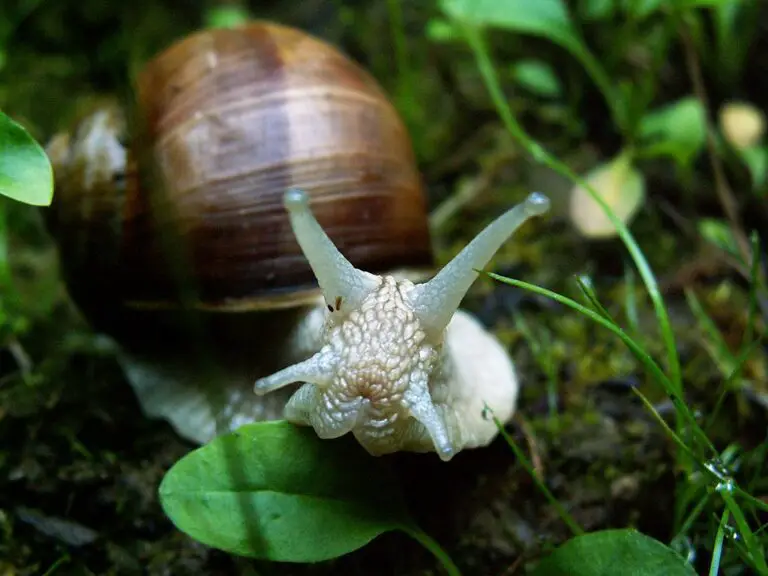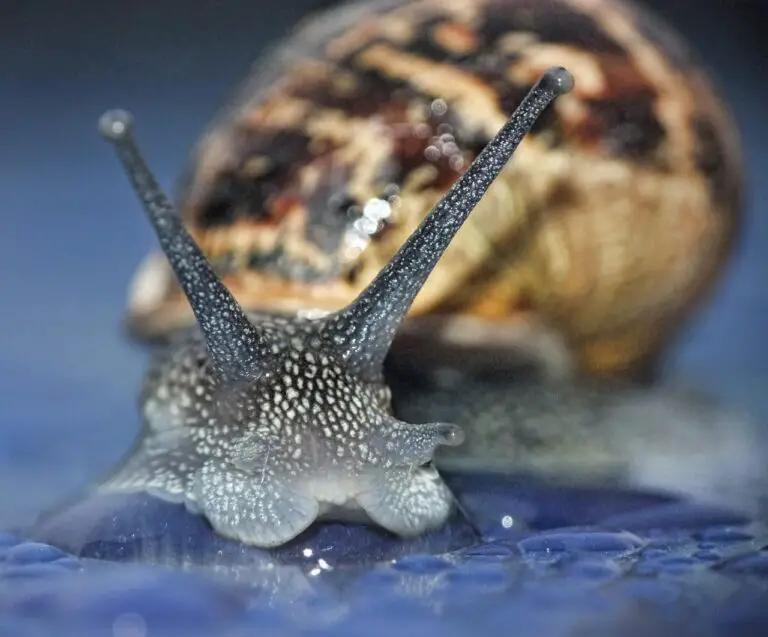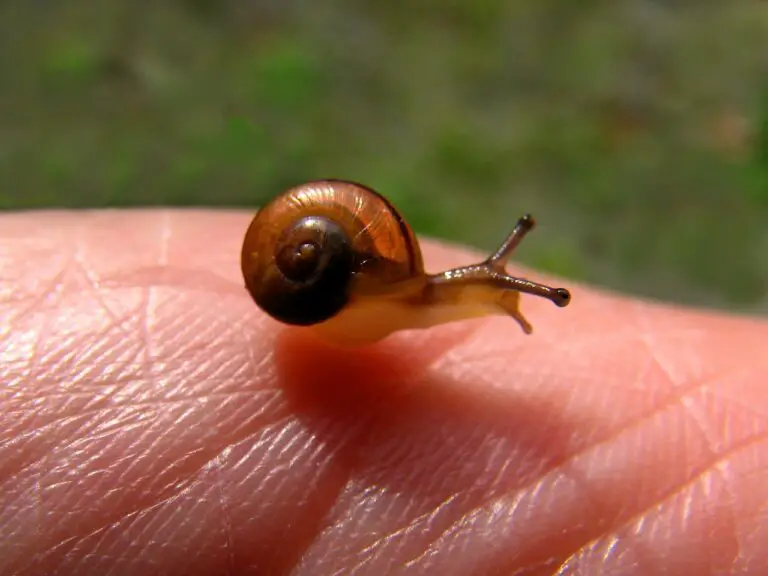The Intricate Anatomy of Snails
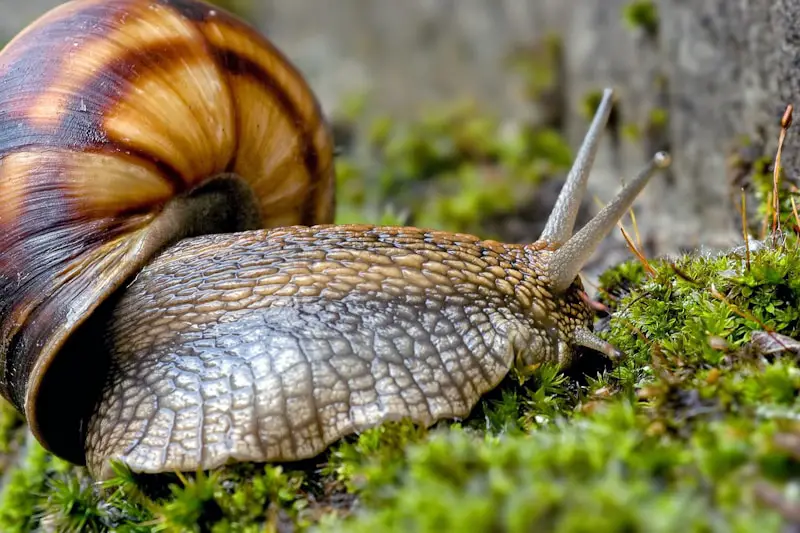
Snails are fascinating creatures that have captured the imaginations of people for centuries. These gastropods are found all over the world, from the deepest oceans to the highest mountains.
They come in a wide variety of shapes, sizes, and colors, and their unique anatomy makes them one of the most interesting creatures in nature. Snails play an important role in many ecosystems.
They are herbivores that feed on plants and help to break down organic matter. In some areas, they are a crucial food source for larger animals like birds and mammals.
In addition, snail shells have been used by humans for thousands of years as tools, ornaments, and even currency. Despite their small size, snails have managed to survive and thrive in some of the harshest environments on earth.
Their unique adaptations have allowed them to adapt to a wide range of conditions, from dry deserts to wet rainforests. Snails also have an important place in human culture.
They feature prominently in folklore from around the world as symbols of wisdom and perseverance. In some cultures, they are even considered sacred animals with healing powers.
In this article, we will take an in-depth look at snail anatomy – both external and internal – as well as some of their unique adaptations that make them such fascinating creatures. By understanding more about these amazing gastropods, we can gain a deeper appreciation for their place in nature and our world as a whole.
1. Shell
2. Liver
3. Lung
4. Anus
5. Respiratory pore
6. Eye
7. Tentacle
8. Cerebral ganglia
9. Salivary duct
10. Mouth
11. Crop
12. Salivary gland
13. Genital pore
14. Penis
15. Vagina
16. Mucous gland
17. Oviduct
18. Dart sac
19. Foot
20. Stomach
21. Kidney
22. Mantle
23. Heart
24. Vas deferens
External Anatomy
Shell: Composition, Shape, and Function
When we think of snails, we often think of their shells. The shell is a defining characteristic of snails and serves several important functions. Snail shells are made up mostly of calcium carbonate and are incredibly strong and durable.
They come in a variety of shapes, sizes, and colors, depending on the species. The shape of a snail’s shell can tell you a lot about the way it lives.
For example, some species have long, cone-shaped shells that allow them to burrow into soil or sand. Other species have flat, disc-shaped shells that help them cling to rocks or other hard surfaces.
The shell also provides protection for the snail’s soft body. When threatened by predators or harsh environmental conditions, a snail can retreat into its shell for safety.
Head: Eyes, Tentacles, Mouth, and Radula (Teeth-Like Structure)
At the front of the snail’s body is its head. On either side of the head are two pairs of tentacles – one pair with eyes and one pair without. The eyes are small but functional and allow the snail to detect light and movement in its surroundings.
The mouth is located beneath the tentacles and contains a radula – a teeth-like structure used for scraping food off surfaces. The radula is covered in tiny rows of sharp teeth that can grind up everything from plant matter to other small animals.
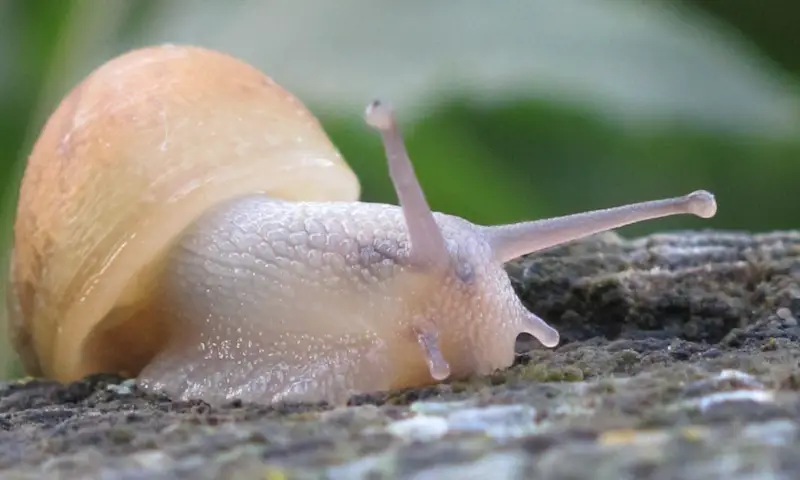
Foot: Muscular Organ Used for Movement
The foot is perhaps the most important part of a snail’s anatomy when it comes to movement. This muscular organ takes up most of the space on the underside of the snail’s body and allows it to crawl along surfaces at an incredibly slow pace.
Despite their reputation as slow movers, some snails can actually move quite quickly. For example, the common garden snail can move at a rate of about 0.03 miles per hour – not exactly speedy, but faster than you might expect from such a seemingly sluggish creature.
In addition to movement, the foot also plays an important role in mucus production. This slimy substance helps to protect the snail’s body from injury and dehydration as it moves along rough or dry surfaces.
Internal Anatomy
Digestive System: Mouth to Anus, Crop, Gizzard, and Intestine
Snails have a complete digestive system that begins with the mouth and ends at the anus. The mouth of a snail is located on the underside of its head and has a radula, which is a ribbon-like structure containing small teeth that are used for scraping food.
Once food enters the mouth, it travels through an esophagus into a crop where it is stored before entering the gizzard. The gizzard functions similarly to teeth in humans by grinding up the food before it enters into the intestine for further digestion.
Snails are herbivores and feed on plants such as algae, leaves, and flowers. They also have the ability to digest rotting wood or even other snails if food sources become scarce.
Respiratory System: Lungs or Gills Depending on Species
The respiratory system of snails varies depending on their species. Some snails have lungs while others have gills for gas exchange. Land snails primarily breathe air because they live in environments with access to oxygen, but some aquatic species use modified gills for respiration.
In lunged-snails, air enters through an opening called pneumostome located near their mantle cavity which leads to their lung chamber responsible for exchanging gases (oxygen and carbon dioxide). In aquatic snail species with gills , water containing dissolved oxygen flows over them so that oxygen can be absorbed into their bloodstream.
Circulatory System: Open Circulatory System with Hemolymph (Snail Blood)
Snails have an open circulatory system meaning that blood is not confined within vessels but rather flows freely between organs in hemocoel compartments filled with hemolymph. Hemolymph contains both blood cells (hemocytes) similar to vertebrates and plasma-like fluid.
The heart of a snail consists of one or two pairs of auricles that receive blood from surrounding tissues, which then pump it out through an aorta. The hemolymph is responsible for transporting nutrients, oxygen, and waste products around the body.
Reproductive System: Hermaphroditic with Both Male and Female Reproductive Organs
Snails are hermaphrodites, meaning they have both male and female reproductive organs. This allows them to mate with any other adult snail regardless of gender.
When snails mate, they exchange sperm packets called spermatophores which they then use to fertilize their eggs. After fertilization, the eggs are laid into soil or in aquatic environments near water vegetation where they will hatch into small snails after some time depending on the species.
Interestingly, some land snails can retain sperm packets for up to several years allowing them to lay several batches of fertilized eggs without needing additional mating sessions. The internal anatomy of snails is just as fascinating as their external appearance.
From their digestive system that allows them to consume a variety of plants and even other snails when food is scarce to their unique hemolymph circulatory system that transports nutrients throughout their bodies freely without confinement in blood vessels like mammals do. Their hermaphroditic reproductive system also makes for some interesting mating strategies amongst these little creatures!
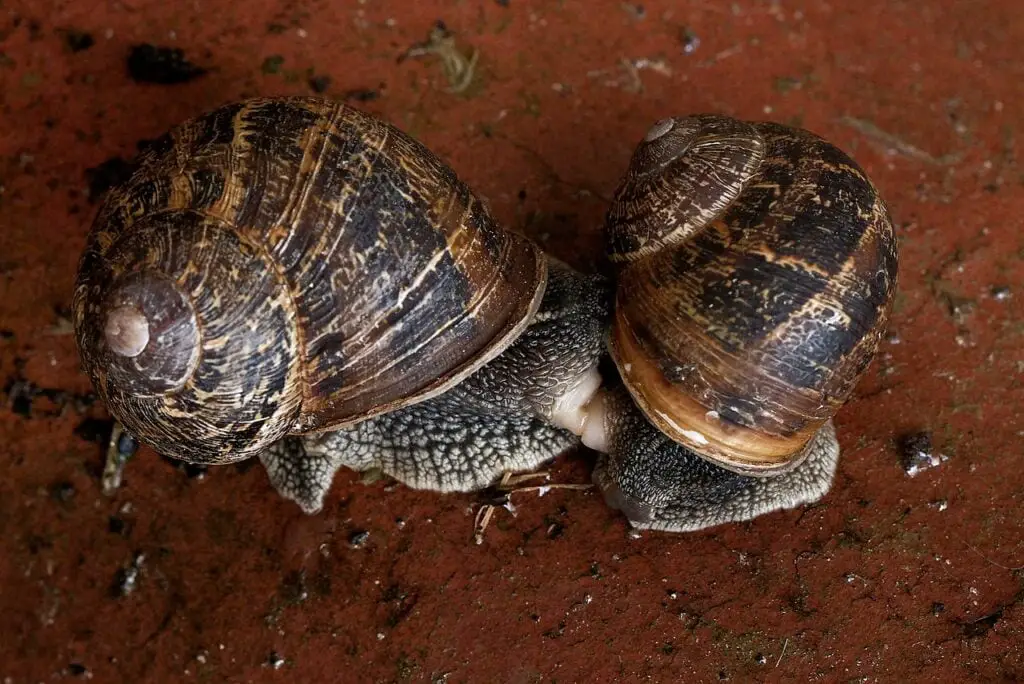
Unique Adaptations
Snails may seem like simple creatures, but they are actually incredibly adaptive. They have a number of unique features that help them survive in their environments.
Mucus Production for Protection and Movement
One of the most well-known adaptations of snails is their ability to produce mucus. Snails use this slippery substance for a variety of purposes. For one, it helps them move more easily across rough surfaces or up inclines.
The mucus acts as a lubricant, reducing friction between the snail’s foot and its surroundings. Another function of mucus is protection.
Snails can produce copious amounts of mucus to seal themselves inside their shells when threatened by predators. This makes it difficult for attackers to get at the snail’s soft body parts.
Some species of snails use mucus to trap prey. They release sticky strands that ensnare small insects or other animals, which they then consume.
Hibernation During Harsh Weather Conditions
Snails are cold-blooded creatures and are therefore susceptible to extreme temperatures. To survive periods of harsh weather, some species hibernate by burying themselves underground or under debris.
During hibernation, the snail’s metabolism slows down dramatically, allowing it to conserve energy and survive without food or water for extended periods. When conditions improve, the snail will emerge from its hiding place and resume normal activities.
Ability to Regenerate Lost Body Parts
Another amazing adaptation of snails is their ability to regenerate lost body parts. If a predator attacks a snail and manages to sever part of its body (such as a tentacle), the snail can grow it back over time.
This is possible because many species have stem cells in their bodies that can differentiate into different types of cells depending on what’s needed for regeneration. In some cases, snails can even regrow an entire shell if it has been damaged or lost.
It’s important to note that regeneration takes time and energy, so snails that have suffered injuries may be more vulnerable to predators until they fully recover. Snails may not seem like the most exciting creatures at first glance, but they are actually fascinating in their own right.
Their unique adaptations help them navigate a variety of environments and survive under challenging conditions. From their slime trails to their regenerative abilities, snails are truly remarkable creatures.
Fun Facts
The Sleeping Beauty Snails
Did you know that snails can sleep for up to three years? It’s true!
Snails are known for their ability to hibernate when conditions aren’t favorable, and this state of inactivity can last for a very long time. During this time, the snail’s metabolism slows down, its body temperature drops, and it becomes inactive.
When conditions improve again, the snail awakens from its slumber and resumes its normal activities. How fascinating is that?
Giant African Land Snails
Snails come in all shapes and sizes, but did you know that the largest species of land snail can grow up to 15 inches long? The Giant African Land Snail is an impressive creature indeed.
They’re native to East Africa but have been introduced to many other parts of the world as pets or for their meat. These massive snails are herbivores and eat a variety of plant materials like leaves and fruits.
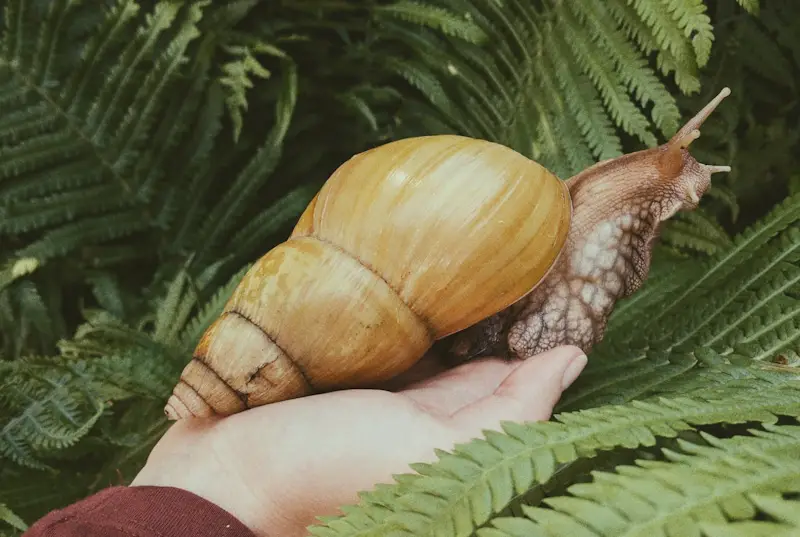
Born This Way
Another fun fact about snails is that they’re not born with their shells fully-formed like you might think. Instead, they start out with tiny shells that grow over time as they continue to molt and produce new shell material. As they grow older, their shells become thicker and more complex in shape.
A Sluggish Lifestyle
One final interesting fact about snails is that they’re not exactly known for their speed. In fact, most snails move at a slow and steady pace, taking their time to explore the world around them. Their foot muscles contract and expand in a wave-like motion, propelling them forward slowly but surely.
This sluggish lifestyle allows them to conserve energy and focus on other important tasks like finding food and reproducing. Snails are some of the most fascinating creatures on the planet.
From their unique anatomy to their impressive adaptations and quirky habits, there’s always something new to learn about these gastropods. Whether you appreciate them for their beauty or find them creepy crawlers, there’s no denying that snails have a special place in the natural world.
Conclusion
From their unique anatomy to their fascinating adaptations, snails are truly incredible creatures. In this article, we have explored the external and internal anatomy of snails, as well as some of the interesting facts about these beloved mollusks.
One of the most striking features of snails is undoubtedly their shells. Composed mainly of calcium carbonate, these hard structures come in a variety of shapes and sizes depending on the species.
Some snails even have shells that resemble conical hats or spirals with intricate patterns. The head and foot are also important parts of a snail’s external anatomy.
The head contains eyes, tentacles, and a mouth with a radula – a tongue-like structure used for scraping food. The foot is a muscular organ responsible for movement.
Internally, we have learned about the digestive system which includes organs like the crop, gizzard, and intestine responsible for breaking down food. Snail respiratory systems can vary between species from lungs to gills.
The circulatory system in snails is open and uses hemolymph (snail blood) to transport nutrients throughout their body. Snails also have unique adaptations that help them survive in different environments.
Mucus production plays an important role in protection from predators as well as aiding movement across surfaces. Hibernation is another adaptation that helps snails conserve energy during harsh weather conditions such as freezing temperatures or droughts.
It’s worth mentioning that while some people may view snails only as pests or slimy garden creatures – they should not be underestimated! Snails can regenerate lost body parts such as damaged tentacles or shells over time; they can sleep for up to three years at a time; and some species are even considered delicacies in certain cultures around the world!
We hope this article has provided you with an appreciation for the complexity and wonder of these small but mighty creatures! From their unique anatomy to their fascinating adaptations, snails are truly remarkable animals that deserve our respect and admiration.

